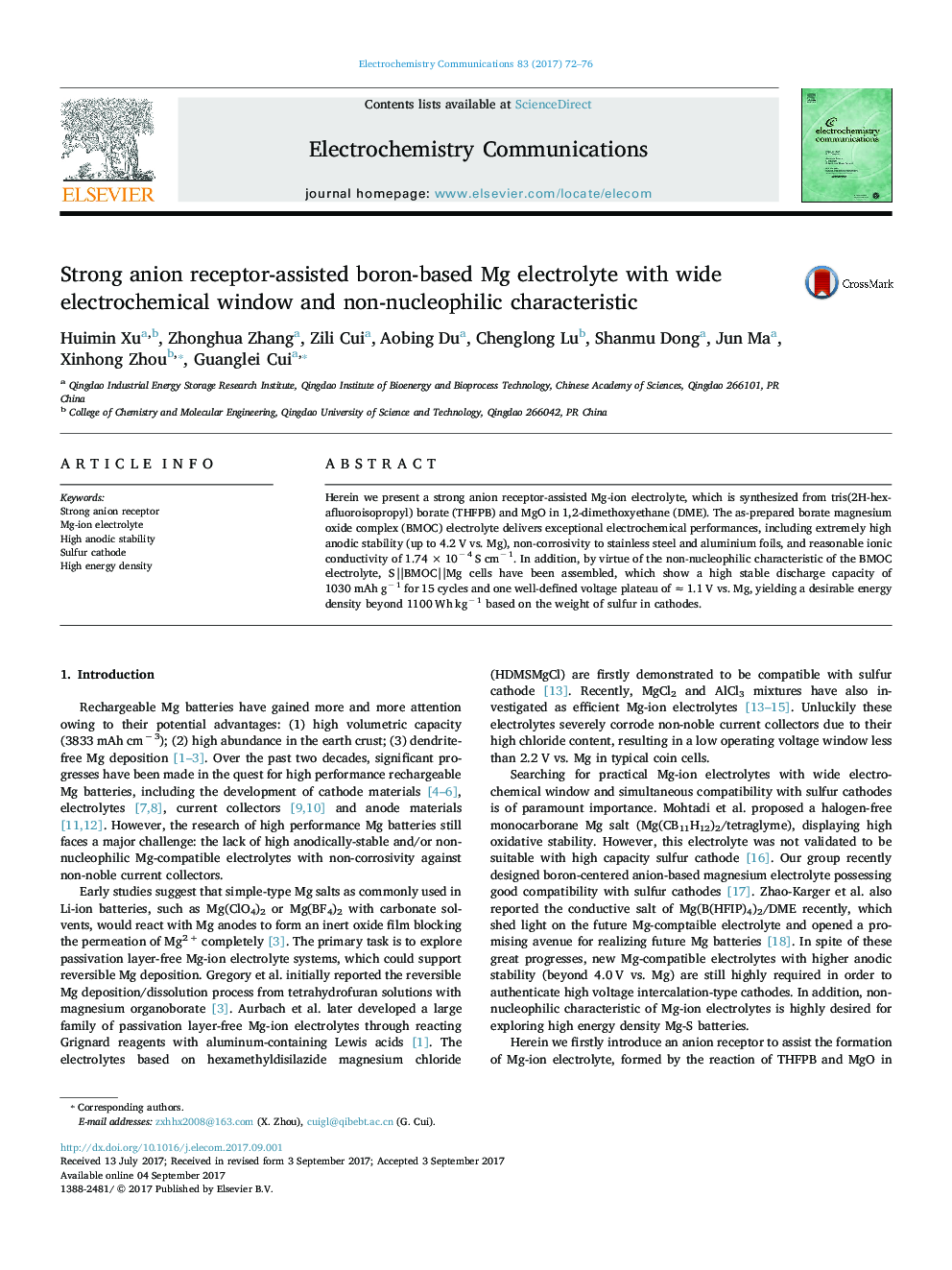| Article ID | Journal | Published Year | Pages | File Type |
|---|---|---|---|---|
| 6469525 | Electrochemistry Communications | 2017 | 5 Pages |
â¢THFPB can effectively facilitate the partial dissolution of MgO in DME forming incipient acitive cation/anion species.â¢This newly-explored Mg-ion electrolyte delivers high anodic stability (up to 4.2 V vs. Mg).â¢The as-designed Mg-S batteries display high specific capacity and relatively less attenuation.
Herein we present a strong anion receptor-assisted Mg-ion electrolyte, which is synthesized from tris(2H-hexafluoroisopropyl) borate (THFPB) and MgO in 1,2-dimethoxyethane (DME). The as-prepared borate magnesium oxide complex (BMOC) electrolyte delivers exceptional electrochemical performances, including extremely high anodic stability (up to 4.2 V vs. Mg), non-corrosivity to stainless steel and aluminium foils, and reasonable ionic conductivity of 1.74 Ã 10â 4 S cmâ 1. In addition, by virtue of the non-nucleophilic characteristic of the BMOC electrolyte, S ||BMOC ||Mg cells have been assembled, which show a high stable discharge capacity of 1030 mAh gâ 1 for 15 cycles and one well-defined voltage plateau of â 1.1 V vs. Mg, yielding a desirable energy density beyond 1100 Wh kgâ 1 based on the weight of sulfur in cathodes.
Graphical abstractThe novel BMOC electrolyte is prepared by a simple one-step synthesis route and presents high reversibility for Mg deposition/dissolution, non-dendritic deposits, no corrosivity to conventional metallic current collectors and 4.2Â V vs. Mg anodic stability on Al foil. Furthermore, good compatibility with conversion materials sulfur indicates that the BMOC electrolytes have great prospect in rechargeable Mg-S battery systems.Download high-res image (217KB)Download full-size image
